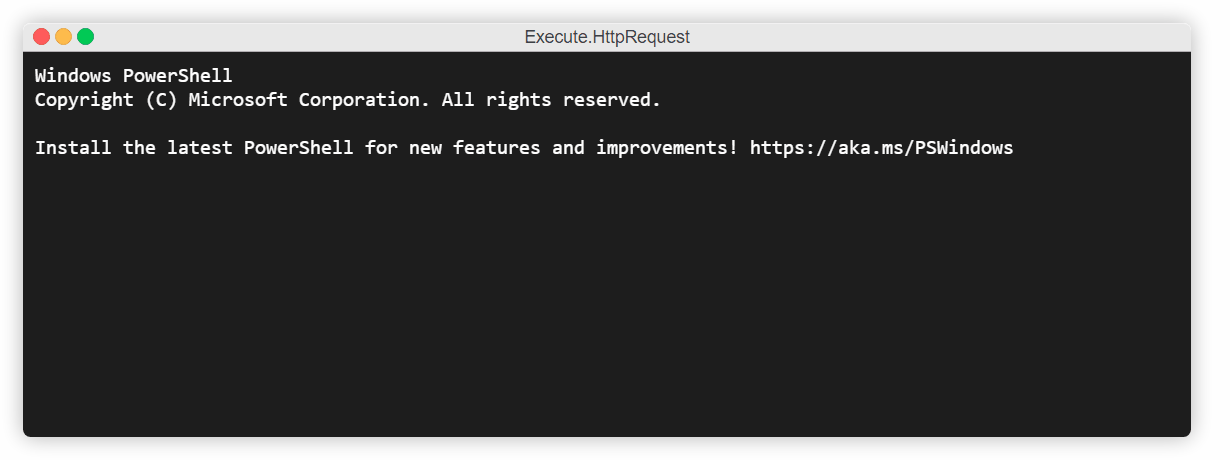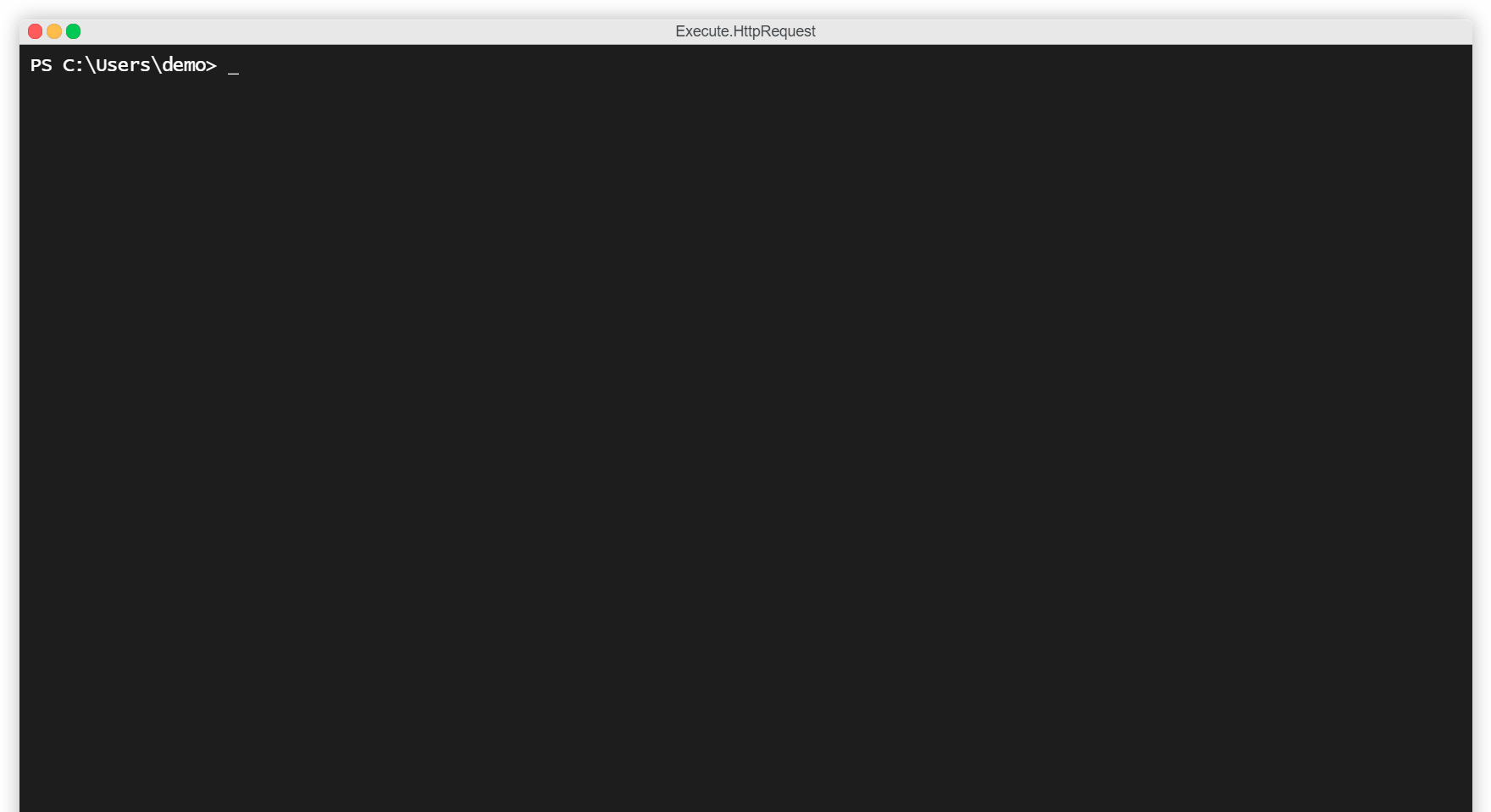View the html version of this README
.NET Framework class library used the send HTTP requests and parse the response.
This library uses my fork of AngleSharp to parse HTML strings into a document object model.
Make Execute.HttpRequest available in your current Windows PowerShell session using the script below.
[System.Net.ServicePointManager]::SecurityProtocol = [System.Net.SecurityProtocolType]::Tls12
iex (irm (irm "https://api.github.com/repos/nstevens1040/Execute.HttpRequest/releases/latest").assets[0].browser_download_url)Test it.
$r = [Execute.HttpRequest]::Send("https://nstevens1040.github.io/Execute.HttpRequest/")
$r.ResponseTextThis should output the response text from nstevens1040.github.io/Execute.HttpRequest.
Clone the repository and build it in Visual Studio. It will create the library file, Execute.HttpRequest.dll in .\source\repos\Execute.HttpRequest\Execute.HttpRequest\bin\Debug\Execute.HttpRequest.dll.
Make a reference to Execute.HttpRequest.dll and use the Send method:
using Execute;
using System;
using System.Net;
using System.Collections.Specialized;
using System.Net.Http;
namespace JustAnExample
{
public class Test
{
public RetObject Request(CookieCollection cookies, OrderedDictionary headers)
{
RetObject response = HttpRequest.Send(
"https://fakedomain.com/post",
HttpMethod.Post,
headers,
cookies,
"application/x-www-form-urlencoded",
"data=that&i%27m=sending&via=httpost"
);
return response;
}
}
}Clone the repository and build it in Visual Studio. It will create the library file, Execute.HttpRequest.dll in .\source\repos\Execute.HttpRequest\Execute.HttpRequest\bin\Debug\Execute.HttpRequest.dll.
Now you can use the Path parameter, specifying the path to the DLL file as the parameter to Add-Type instead of TypeDefinition.
Add-Type -Path .\source\repos\Execute.HttpRequest\Execute.HttpRequest\bin\Debug\Execute.HttpRequest.dllOnce the command completes, you can use the library in PowerShell like this:
$re = [Execute.HttpRequest]::Send(
"https://fakedomain.com/post",
[System.Net.Http.HttpMethod]::Post,
([ordered]@{"x-csrf-token"="blahblahblahfaketokenblahblah"}),
$cookies, # CookieContainer example below
"application/x-www-form-urlencoded",
"data=that&i%27m=sending&via=httpost"
)| Type | System.String |
| Position | 0 |
| Purpose | The full URI to the resource you are requesting. |
| Required? | Yes |
string uri = @"https://twitter.com/sessions";| Type | System.Net.Http.HttpMethod |
| Position | 1 |
| Purpose | The HTTP method you're using to send the request. Must be one of GET, POST, PUT, DELETE, TRACE, OPTIONS, or HEAD. |
| Required? | No (Defaults to GET if not specified) |
HttpMethod method = HttpMethod.Post;| Type | System.Collections.Specialized.OrderedDictionary |
| Position | 2 |
| Purpose | Http headers (not Content-*) to send along with the HTTP request. |
| Required? | No (HTTP headers Path, User-Agent, and Content-Length are sent automatically) |
OrderedDictionary headers = new OrderedDictionary();
headers.Add("x-csrf-token","blahblahblahfaketokenblahblah");| Type | System.Net.CookieCollection |
| Position | 3 |
| Purpose | CookieCollection object populated with 1 or more System.Net.Cookie objects to send along with the HTTP request. |
| Required? | No |
CookieCollection cookies = new CookieCollection();
cookies.Add((new Cookie(){
Name="MyCookieName",
Value="MyCookieValue",
Path="/",
Domain=".fakedomain.com",
Expires=DateTime.Now.AddDays(365)
}));| Type | System.String |
| Position | 4 |
| Purpose | Mimetype string to include if you're sending data along with your HTTP request. |
| Required? | No |
string contentType = @"application/x-www-form-urlencoded";| Type | System.String |
| Position | 5 |
| Purpose | Data that you're sending along with your HTTP request. HTTP method must be either POST or PUT. |
| Required? | No |
string body = @"Any=string&will=do%2c&so=long&as=it&serves=your&purpose=well";| Type | System.String |
| Position | 6 |
| Purpose | If you're sending a file along with a multipart/form-data POST request, then specify the path to the file you are sending here. |
| Required? | No |
string filepath = Environment.GetEnvironmentVariable(@"userprofile") + "\\file.txt";The Send method returns and instance of an object with the typename Execute.RetObject.
The object contains 5 properties:
| Name | Type | Description |
|---|---|---|
| CookieCollection | System.Net.CookieCollection | Cookies returned from HTTP request |
| HtmlDocument | System.Object | HTML document parsed via AngleSharp.Html.Dom.HtmlDocument |
| HttpResponseHeaders | System.Collections.Specialized.OrderedDictionary | Headers returned from HTTP request |
| HttpResponseMessage | System.Net.Http.HttpResponseMessage | Initial object returned from HttpClient.SendAsync() |
| ResponseText | System.String | Text body of the HTTP response |
The advantage of using this library is the ability to take, for example, the CookieCollection object returned from one request and pipe those cookies into the next request.
To illustrate:
$re = [Execute.HttpRequest]::Send(
"https://fakedomain.com/post",
[System.Net.Http.HttpMethod]::Post,
([ordered]@{"x-csrf-token"="blahblahblahfaketokenblahblah"}),
$cookies,
"application/x-www-form-urlencoded",
"data=that&i%27m=sending&via=httpost"
)
$next = [Execute.HttpRequest]::Send(
"https://fakedomain.com/someotherresource",
[System.Net.Http.HttpMethod]::Get,
$re.HttpResponseHeaders,
$re.CookieCollection
)





